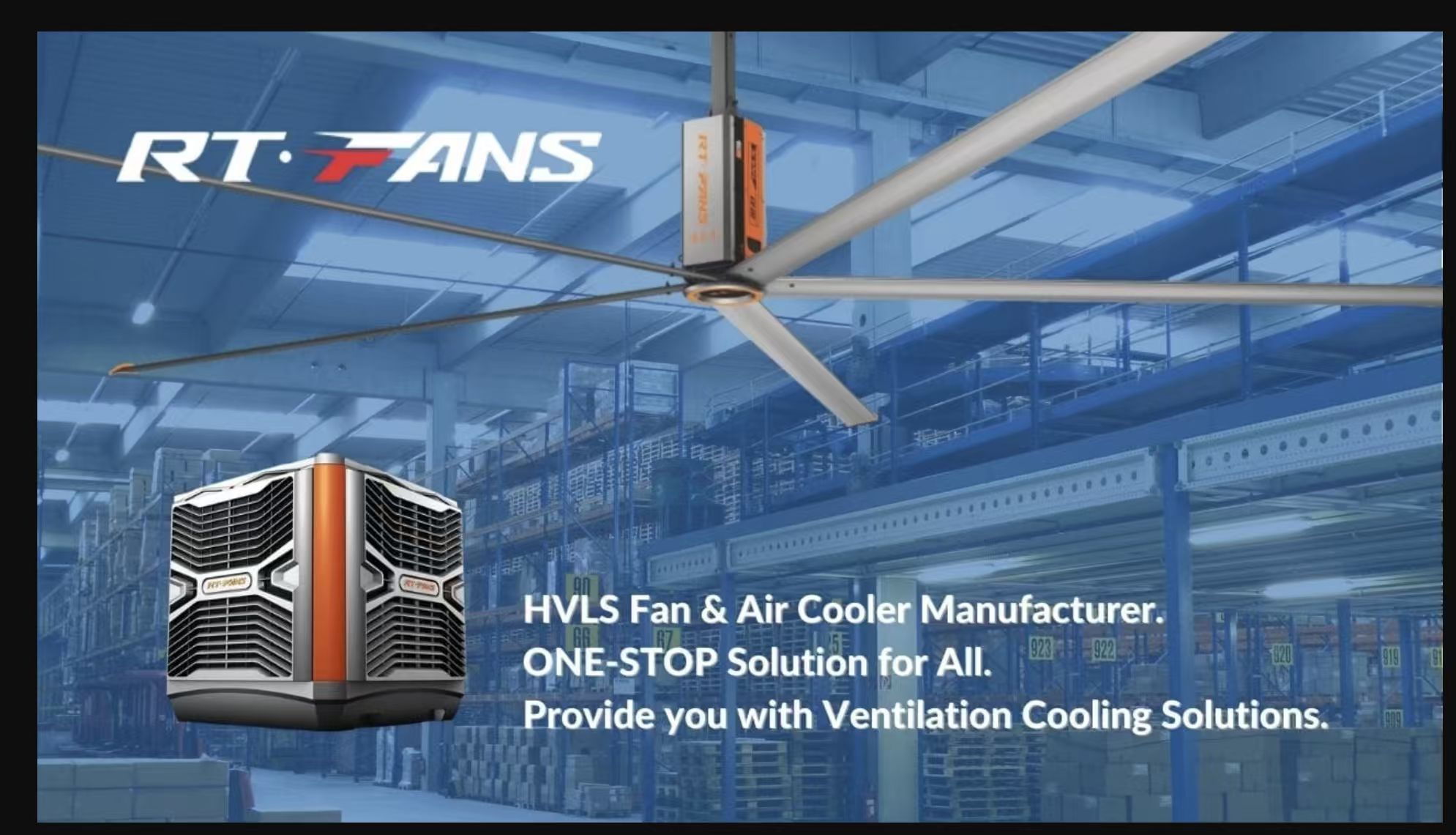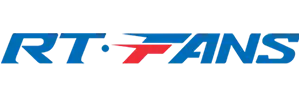Sport halls are bright rooms, which receive activities such as basketball competitions, volleyball games, and neighborhood meetings, where a great number of people and energetic activities may shortly lead to the unpleasant heat. Poor cooling will also affect performance, not to mention health risks (dehydration, heat exhaustion, etc.). Ceiling fans (and HVLS fans in particular) in the industry can significantly reduce the risk of heat-induced accidents in overcrowded sports halls due to better circulatory and eliminating any chance of overheating, as well as enhancing the safety of the players and spectators.
HVLS fans are an addition to HVAC systems that offer the benefits of a wind-chill effect that can cool the perceived temperatures by 5- 10°F, increasing the air diffusion across large spaces, saving the energy bill by 20-30 percent, and improving safety requirements. The organizers of events, the operators of the athletic facilities, and safety officers, to whom these fans will be introduced, will view this as a proactive step for the sports hall operators. RTFANS is over 20 years old in offering ventilation solutions in order to maximize safety in most of its premises. We shall talk about the dangers, non-conventional cooling is not the best, reasons behind the superiority of the use of HVLS fans in terms of safety, health factor, event utilization, ROI, and common questions posed.
Heat Stress Risks in Sport Halls

The design and use of sports halls have unique heating problems that expose participants and audiences to danger.
High Occupancy During Events
Tournaments or concerts fill the hall with 500-5,000 people, creating body heat (100-150 W per person) which increases temperatures by 5-10°F. This can also reach over 85°F (29 °C) in a 10,000-square-foot hall, according to the WHO, causing dehydration and exhaustion.
Indoor Heat Accumulation
High-ceiling (20-40 feet) enclosed spaces concentrate the heating effects of lighting, equipment, and activity, resulting in stratification due to the warmer air ascending to the ceiling. This poses some discomfort; the athletes suffer a decrease in endurance (10-15% decrease in performance), and spectators have medical emergencies such as fainting.

Athlete Performance Drops; Spectators Face Discomfort
Heat stress affects cognitive performance by 10-20% and worsens mistakes in sports, and poses hazards to spectators. OSHA also reports heat-related illnesses to increase over 80degF (27°C), and heat exhaustion can occur with long-term exposure.
Why Traditional Cooling Falls Short
Sport hall dynamics are generally poorly considered in traditional systems.

HVAC Systems Struggle to Provide Uniform Cooling in Large Halls
Average occupancy HVAC cools excessively during low occupancy, or it does not cool adequately during events, and it requires lots of energy (30-50% of the venue costs). Ductwork does not distribute air in an open layout evenly and leaves hot pockets.
Portable Fans Cover Only Limited Areas
Portable fans 5,000-10,000 CFM occupy 1,000-2,000 square feet, yet they generate drafts and noise (50-60 dB) that is disruptive. They take up too many units and become expensive and cumbersome.
Heat Pockets Form in Crowded Spaces
Stand or court areas are often crowded, and traditional systems are not effective in circulating heat, resulting in uneven comfort and safety problems.
How HVLS Ceiling Fans Improve Safety

Hvls fans, 8-24 feet in diameter, 100,000-400,000 CFM, were used to offer specific safety improvements at low speeds.
Create Consistent Air Circulation Across Large Spaces
HVLS fans take 10,000-22,000 square feet per unit and will distribute air evenly throughout halls. This gets rid of hot spots, in line with ASHRAE 55 concerning thermal comfort.
Reduce Perceived Temperature Through Evaporative Cooling
The wind-chill effect reduces the apparent temperatures by 5-10 degrees Fahrenheit, avoiding overheating without mechanical cooling. In the case of athletes, this keeps them playing; in the case of spectators, it eliminates chances of dehydration.
Prevent Stagnant Air Zones Where Heat Accumulates
Fans destratify air (moving warm air in the upper layers with cold air in the lower layers) to eliminate temperature gradient and create stagnant areas, which foster heat stress.
Quiet Operation Ensures No Distraction During Events
HVLS fans run at less than 35 dB, quieter than a whisper, and will not disrupt announcements or cheers, which HVAC (50-60 dB) will.
Health & Safety Benefits

The HVLS fans provide quantifiable health benefits.
Lower Incidence of Heat-Related Illnesses
According to the WHO heat stress guidelines, fans can reduce the risks of heat exhaustion (such as dizziness) by 20-30 per cent, by lowering the heat index between 5-10°F. This is critical when the duration of events is 2-4 hours.
Improved Athlete Endurance and Recovery
When the weather is cooler, the oxygen intake is increased, which improves endurance by 10-15%. Sports such as basketball injuries are minimized by decreasing recovery times.
Safer Environment for Spectators and Staff
Heat safety. The temperature of wet bulb globes should be no less than 80°F in order to support the suggestions of OSHA regarding heat safety (95 deg F is a limit). Fans help keep the air around a crowd of people breathable, which is the reason why the use of wet bulb globes is recommended to maintain the recommended level of heat safety (95 deg F).
Event-Specific Applications

HVLS fans excel in all kinds of events.
Basketball Tournaments
During tournaments, the fans use cool courts and stands in a 15,000-square-foot hall to minimize heat stress to athletes and discomfort to spectators.
Volleyball Games
Fans evenly cool down players and fans and eliminate dehydration during high-paced games.
Large-Scale Community Sports
In case of multi-sport events, the fans keep the crowded venues safe, and they keep the air flowing at the peak.
ROI for Venue Operators
The economics of HVLS fans are good. A mid-sized hall (4-6 fans) costs $20,000-60,000 to install, and can save energy worth 2,000-5,000 a year (20-30% HVAC reduction). ROI is 18-24 months, and lower maintenance (200-500/year). Fewer medical emergencies lower the liability and increased attendance raises revenue by 10-15%.
FAQ: Common Questions About Ceiling Fans in Sport Halls

- Can ceiling fans alone prevent heat-related incidents in sports halls?
Yes they do in mild conditions; extreme heat they complement the HVAC, and by doing this the risks are reduced by 20-30%. - Do HVLS fans interfere with games or athlete performance?
No, they are light in the air and produce less noise (less than 35 dB), so that they do not create disruptions and HVLS fans are event safe.. - How do fans integrate with existing HVAC systems in large venues?
HVLS fans save HVAC load of 20-30% and evenly mix air throughout the sports venue to avoid overheating. - What’s the cost-benefit of fans for event venues?
Saving 20-30% of energy with 18-24 months ROI, they are well suited to cooling athletes and spectators with fans.
Conclusion
Occupancy and activity in sports halls can present a high threat of heat stress that cannot be adequately overcome by conventional cooling. HVLS ceiling fans can enhance safety through better airflow, perceived temperatures, and stagnant air. Industrial ceiling fans are a good example of a safety measure that should be embraced by sports hall managers to mitigate the risk of heat stress, protect athletes and spectators, and conduct safe and comfortable events. RTFANS is a 20-year-old company that has specialized solutions for HVLS. Get in touch with us to protect your venue-intelligent cooling means intelligent safety.
